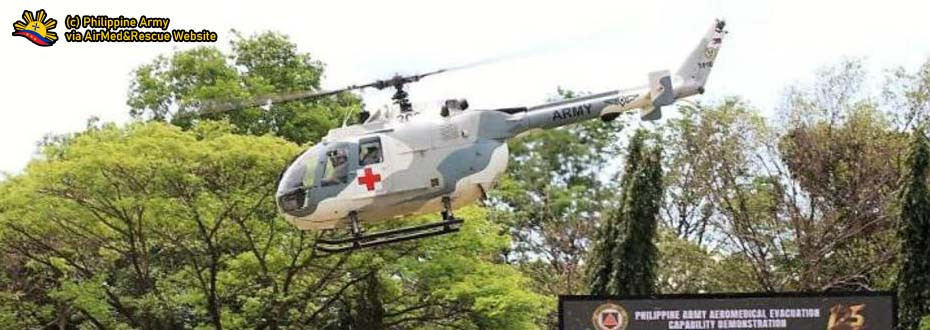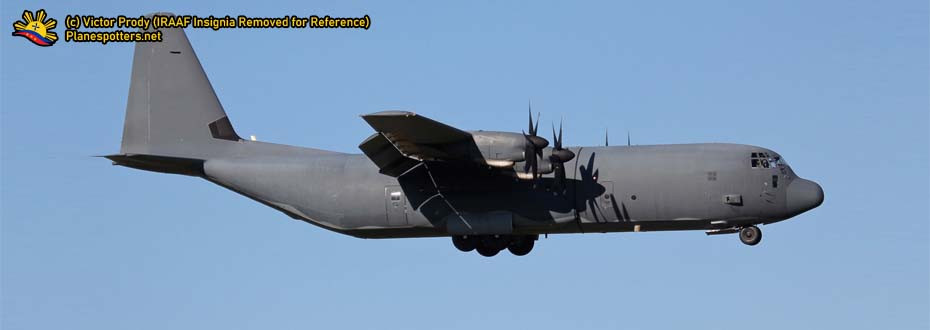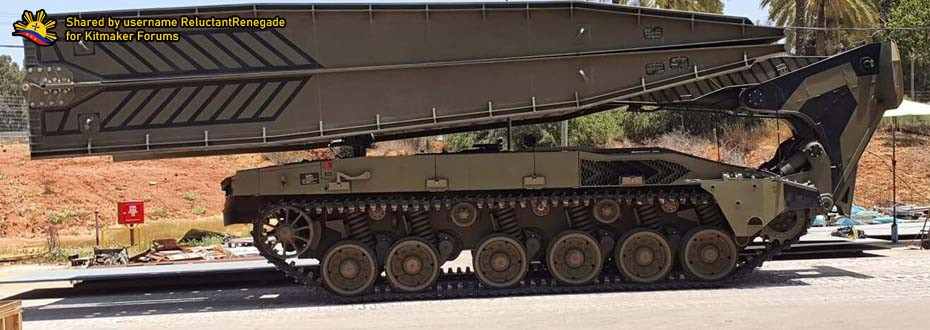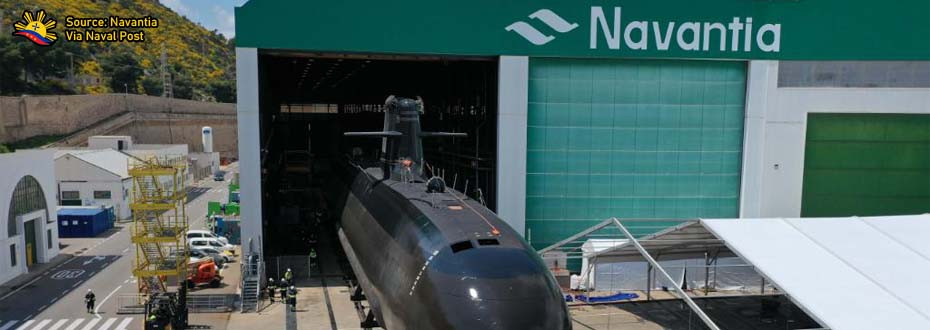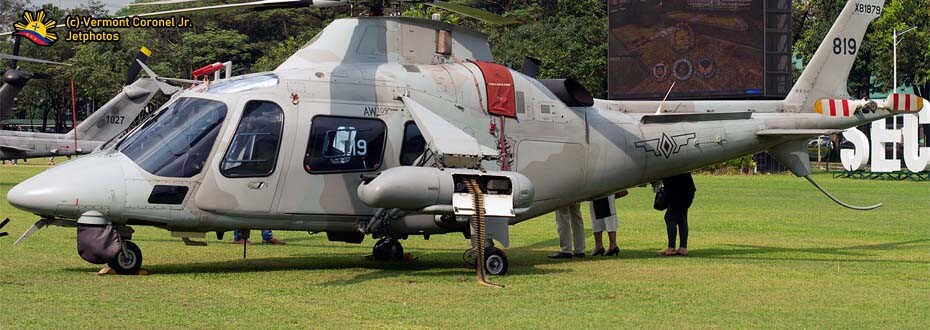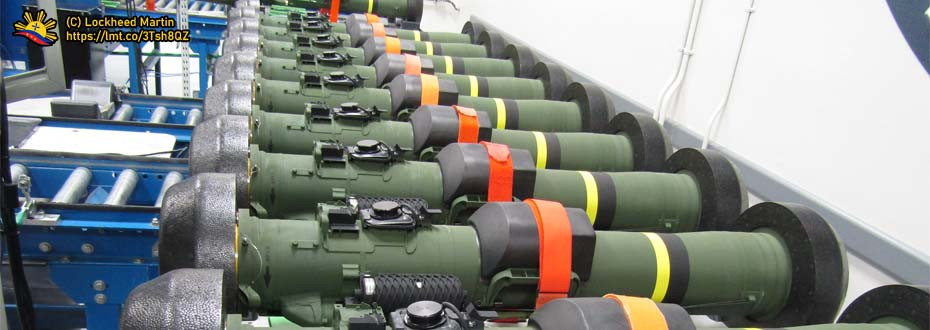DISCUSSION OVERVIEW
 |
| This is what a Pandur 2 Tank Destroyer looks like. |
The Armor Division in itself currently obtains more Armored Personnel Carriers where through the years serve as its primary military support for protection for deploying troops and providing additional firepower for the ground troops to attain its military objective especially in a conflict such as the September 9 Zamboanga Siege that took place more than six years ago.
It is been known that the Philippine Army's Armored Division undertakes several changes with the recent one involving the change of its name and composition from what was once named the Mechanized Infantry Division wherein it only with the continuity that this component within the Army gets enhanced and improved by time to time with the entry of several platforms that helps its performance better.
Currently, the Philippine Army embarks on its won Light Tank Procurement Project wherein it divides into two categories: procurement of a light or medium tank and the procurement for a tank destroyer. So far, the potential candidate for the light or medium tank under that category is the General Dynamics European Land Systems (GDELS) ASCOD 2 MMBT or Medium Main Battle Tank (check this article we provided for more information).
With regards to the tank destroyer or fire support vehicle category, it may be not that surprising if the preferred platform goes also to the similar supplier of the ones who also provided the resources for the light tank category wherein there is a more positive sense of inter-compatibility and logistics between these assets where similar subcomponents or features may be shared across these platforms.
Just with the light tank, obtaining a tank destroyer comes with its ideal utilization within the Philippine Army wherein it has the significance regarding its necessity and its purpose where it will augment the tracked light tanks and armored personnel carriers shall these things will be materialized upon.
Just to take note, a tank destroyer for this project's sake is considered a wheeled tank with similarities on the gun utilized between the two, only that this one obtains an 8x8 wheeled format as it is considered a requirement for the Philippine Army for this category which suffices the need to carry a 105mm caliber gun.
KNOWING EXCALIBUR ARMY
Website: https://www.excaliburarmy.cz/
The products section can be accessed here.
 |
| The company's logo. |
Now, getting back to the Excalibur Army itself once again.
The company embodies the portion of the Czechia Defense Industry as it is currently considered as a member of a larger Czechoslovak Group wherein it is an organization that supports the improvement and development of both Czech and Slovak industries, both in civilian and in military fields of the industry in a country that was formed as Czechoslovakia, now the countries of both neighbors Czechia and Slovakia.
Its specialties include military vehicles ranging from highly-combative ones that are meant for combat utilization such as tanks and armored personnel carriers it produces down to its support chain which may go from engineering platforms for military applications down to providing spare parts as part of their logistics chain to the vehicles they provided as well as several rifles and ammunition.
Apparently, for this company, it goes as notable on its production of vehicles where until now, they are still producing these Soviet-era T-72 modernized main battle tanks (known as the T-72 Scarab) and the older T-55 main battle tanks which are still in active service in some countries including the Russian Federation. Nevertheless, the Czech Republic in this manner is already a member of the North Atlantic Treaty Organization or NATO so it may go just as sensual for the country to produce these tanks to a modernized one in compliance with the standards within the organization.
Through this, it makes it ideal in considering Russian-oriented tech through this approach, although such a tank option is out of the picture, given that the Philippine Army is seeking light or medium tanks with chances that it will be coming in a form of a tracked armored personnel carrier with a 105mm/120mm gun capability produced jointly by Czech's southern neighbor and the Philippines' former overlord.
Other than the tanks, the Excalibur Army also obtains a portfolio of armored personnel carriers and infantry fighting vehicles in which the Pandur 2 8x8 considers as one of the products offered by this Czech defense company. Like the T-72, Excalibur also has its BMP-1 product which is a classical thing from the Soviet Union wherein they provided modernized and latest iterations of the vehicle like the BMP Mexca IFV.
Founded in 1995, the Excalibur Army through the years of operations provides primary weapons which are specifically for Czech military use which comes as a usual thing with countries having localized defense industries that provide the tools and weaponry for their respective local Armed Forces to utilize.
With that length of operations and also its continuous service within the Czech Republic, it comes with an idea of having a reputable company on its worth where they manage to produce and innovate newer military assets out from old, Soviet weaponry as former Czechoslovakia was once part of the then-Warsaw Pact led by no other than the Soviet Union itself and still modernize it for their own use.
Having such an experience, it comes at no doubt that the company's background and reputation play a factor in the development and production of a product like the Pandur 2 8x8 Tank Destroyer wherein the standards and practice in place in creating a quality product goes along the satisfaction of the end-user that it is capable to do as it is designed for efficiently and effectively.
THE PANDUR FAMILY OF ARMORED VEHICLE'S DEVELOPMENT
 |
| This is the Pandur 2 IFV under test by the Czech. Its predecessor sports a 6x6 wheel composition. Via Wikimedia Commons. |
The company that initiated its development at that time was the Austrian Steyr-Daimler-Puch Spezialfahrzeug AG & Co AG in which, just as mentioned during the previous blog article on the ASCOD MMBT, is now part of the Spanish-based, US-originated Defense Company General Dynamics European Land Systems Limited (GDELS) wherein the PANDUR as a product was also shown on the company's website here.
One may ask: If the one developed the vehicle is the European division of General Dynamics, then why we are discussing it as if it is the product of a certain Czech Defense Company such as Excalibur? As detailed on the article's subtopic on Excalibur above (specifically on the linked related content), it was known that GDELS and Excalibur forged a deal where they join forces in promoting the PANDUR in Eastern European markets as well as on Asian ones.
In other words, this enables Excalibur Army to be that exclusive distributor of the General Dynamics European Land Systems-developed Pandur (in this case the Pandur 2 variant) where they will export it on the aforementioned markets which come at no surprise wherein the Philippine Army is considered that potential customer situated in Asia. So, to this extent, it is just as wise to go with GDELS' ASCOD MMBT and the Pandur 2 8x8 Tank Destroyer where both obtain the same build, developer, and manufacturer. This is aside from the thing that involves a certain Israeli Defense Industry which will get discussed along the way through this article.
Going back to the development of the vehicle, the first prototype was first released in 1985 and gets into production just a year later. The first customer who sets up the order for the first units of Pandur in the manufacturing line was Austria where they put up their procurement numbers of around 68 units, which it will be delivered just a decade later.
It is quickly followed by the Kuwaiti National Guard who ordered 70 units of Pandur 1 6x6 Armored Personnel Carriers through AV Technology International from the United States and the Belgians who ordered 54 Pandur APCs - totaling it up to 192 units produced for the first three customers alone which speak for its ideal utilization where these first three customers benefit from the performance this armored vehicle platform provided.
This customer setup alone makes the vehicle qualified to the active user's requirement that the Philippine Army needs where either the country of origin or at least two users have such a platform in service wherein that increases the chance for such a platform like the Pandur to be considered as a wheeled tank option for the Philippine Army.
THE SPECIFICATIONS
 |
| This is the Austrian Army's Pandur I 6x6 Armored Personnel Carrier. It is considered the first variant of its type. Image Courtesy of Wikimedia Commons. |
Like the ASCOD, the Pandur especially its first version the Pandur I 6x6 armored vehicle was originally produced as a troop carrier with the former obtaining the firepower capability which renders it more as an infantry fighting vehicle while the latter was developed earlier than the former, both of which are active in service as of the current date with Austria being the one that obtains both platforms.
Now, we will tackle down the details regarding the different version of Pandur armored vehicles with different tweaks and weapons fit being integrated through the years until to the point that there is an offering of a tank destroyer variant in service which may find its way to the Philippine Army service if such a platform may be chosen as a wheeled tank variant for the service branch's Light Tank Acquisition Project.
The Pandur 1 6X6 Armored Personnel Carrier
 |
| The Pandur 1 6x6's Specifications. Image Source. |
The original base variant of the Pandur does not come with any gun turrets at all. Its function is just like the M-113 Armored Personnel Carrier that the Philippine Army obtains where it is primarily more for troop protection and deployment in combat upon necessity. Both of these are allowable to be upgraded later on with the gun turrets being fitted at the top of the vehicle which renders it more firepower in times of combat. Also to take note that such a base variant has firing ports for the troop occupants on board, something that is lacking on the M-113 platforms.
As noticeable, its engine produces 260 horsepower of energy for the Pandur 1 8x8 to operate, far from the 600 horsepower produced by a Spanish Pizarro Infantry Fighting Vehicle which is an ASCOD variant. It is of no surprise given that the Pandur 1 8x8 is smaller and lighter for an operator to utilize wherein it comes with more speed and maneuverability given these attributes which is an ideal thing with comes to a wheeled armored personnel carrier.
Hence, with its service within the Austrian Army alongside the ULAN Infantry Fighting Vehicles it obtains which in itself is an ASCOD 1 variant, it is good to provide an idea that there is a high-low mix on this organization's fleet of military armor as the Pandur serving more of a lighter mix of an Armored Personnel Carrier whilst the ULAN serving as a better-armored Infantry Fighting Vehicle that provides additional Firepower support in combat. Both of the assets are useful for their own worth.
The Pandur 2 6x6/8x8 Armored Personnel Carrier
 |
| Pandur 2 8x8's Specifications. Image Source. |
The engine power also comes as an improvement where it is now powered by a 285-horsepower Cummins ISC 350 diesel which is more powerful than the previous one with an extra 25 horsepower of energy for the vehicle to operate. It comes as no surprise given that extra space for additional troops plus fitted weaponry onboard demand such additional energy to propel through to attain its speed and maneuverability in combat in line to its predecessor.
There are two variants of Pandur 2 in service - the 6x6 wheeled variant and the 8x8 variant. Austria is the first country to have Pandur 2s in service with its requirement of an additional 129 units of such vehicle (6x6 wheeled composition) in complement to the existing earlier versions of Pandur it obtains in service. The first country to order the 8x8 wheeled composition variant of Pandur 2 is the country of Portugal where it ordered 260 units with 240 of it for the Portuguese Army and the remainder for the country's Marine Corps.
Excalibur Army's entry for Pandur 2 as an exclusive distributor (with a partnership with GDELS) for Eastern European and Asian markets started when its mother country the Czech Republic started ordering such units for its own Armed Forces, totaling to their procurement order of 107 Pandur 2 8x8 vehicles in which it was delivered between 2009 and 2013 wherein 72 of which is a wheeled infantry fighting vehicle and the remainder being the support-oriented vehicles (reconnaissance, ambulance, engineering and company command).
THE TANK DESTROYER/FIRE SUPPORT VEHICLE VARIANT
 |
| Excalibur Army contributed to the development of a Pandur Variant that packs more firepower. Image Source. |
This fire support vehicle or tank destroyer/wheeled tank as said by others has a choice regarding its gun turret that may come with two variants - one will come with a CMI Cockerill Gun which the Philippines will surely not be getting due to the arms restrictions that the Belgian province of Wallonia applied on its exports especially in putting the country into sanctions due to their so-called human rights violations or atrocities.
Nevertheless, there is another gun variant that the Philippine Army may see interesting to have shall the Pandur 2 gets considered - the Leonardo HITFACT 105mm gun which may also find its way to the ASCOD 2 Medium Main Battle Tanks, in which it is currently seen as a preferable option for the Philippine Army's tracked portion of the Light Tank Acquisition Project.
Going to this approach means better interoperability between two military platforms wherein it simplifies the complications on compatibilities and logistics that may come especially in the maintenance side where skills and spare parts commonality are a nice attribute on this case as well as on the operations side which simplifies the training over such platforms.
Looking in a nearby ASEAN country of Indonesia, they are now in the process of setting up a letter of intent for these Fire Support Vehicles wherein the chances here is that it will sport the CMI Cockerill Gun for their own requirements as they are also expecting their partnership-developed Kaplan MT with Turkey to produce soon as it also obtains a similar gun mount from CMI Defense which simplifies their own logistics.
With Indonesia considering such a platform, it is nicer to see regarding the number of users that such an asset may have for years to come which there will be more viable sources for spare parts shall things are needed to keep it running and retaining it active within the Philippine Army Service.
Like the Pandur 2 8x8, the Fire Support Vehicle variant may also have almost similar specifications. For more details, kindly refer to the table below.
 |
| The Pandur II 8x8 FSV/Tank Destroyer's Specifications. Image Source. |
 |
| Defense undersecretary Ricardo David and Czech Deputy Defense Minister Jakub Landovský signs the Czech-Philippine Agreement on Defence Cooperation. Photo from the Czech Embassy in Manila (Image Source) |
This signed defense cooperation agreement primarily involves military and defense procurements that aim for peace and security as advocated by both nations which may provide that necessary drive for the Philippine Army to modernize itself further that comes along with other branches within the Armed Forces in the aims of providing better performance on its mandated duties and responsibilities as the defenders of the nation.
Such a defense cooperation agreement was followed up by the first defense committee meeting between both nations wherein it further opened more opportunities such as developing both armed forces and potential joint industrial projects wherein Excalibur Army may contribute along as they are seeking additional markets share in the Southeast Asian Military market that will cement their position in this portion of the greater Asia-Pacific region.
With this progress regarding the relationship, particularly the defense-related one between the Philippines and the Czech Republic, it may come to no surprise if it is the Excalibur Army-export Pandur 2 Fire Support Vehicle will serve as the product of such development wherein the end-user benefits from having such a vehicle that will fill its requirements that goes of having a capable armed force while the supplier gaining newer markets that will provide the product and support in which it comes with a guarantee of continuous cooperation and potential of future transactions as additional orders may arise given the commonality over these military assets.
Shall the deal proceed for this program, it will make the Czech Republic the Philippines' latest supplier of military assets wherein it will join up the ranks of the United States, Indonesia, Israel, South Korea, and several others with their weapons such as the Pandur 2 8x8 Fire Support/Wheeled Tank vehicle may find its worth in case a future conflict may take place in a manner that the South Korean-made FA-50PH of the Philippine Air Force was fully utilized in a conflict such as those in Battle of Marawi or in an earlier sortie in the nearby town of Butig, Lanao del Sur, providing the support needed in ending the battle or a conflict early with lesser damage and casualties whenever possible.
The improvement of relations between the Philippines and the Czech Republic is helpful for the Army's efforts of modernizing itself further given that with the reorganization of the Armor "Pambato" Division from the former Mechanized Infantry Division comes the hopes, dreams, aspirations, and the likeliness that this unit within the Philippine Army may obtain such platforms such as a light tank, both wheeled and tracked ones.
One may wonder once these assets get traction, materialized, produced, and even delivered where it may showcase by the Army Mechanized Unit in the similar manner it did with the upgraded M-113 Armored Personnel Carriers shown in this clip which shows the improvement of the division from what it obtains just a decade ago.
TO SURMISE THIS UP
As the newly-reorganized Armor Division celebrated its 43rd Anniversary as a mechanized unit within the Philippine Army, it comes will all of those hopes, dreams, aspirations, and steps for this unit to grow even better in terms of capability and firepower in which the on-going Light Tank Acquisition Project may help that suffice the needs.
This project is divided into the tracked and wheeled components wherein it obtains different objectives but still arrives at a similar 105mm gun mount that the Army seeks to get equipped onboard the prospective vehicle candidates that are being considered on this project matter.
Currently, the Philippine Army sticks to its upgraded M-113 Armored Personnel Carriers wherein several of these assets are recently being equipped with 81mm Soltam Cardom Mortar Mobile System mounts courtesy to Elbit who is also the supplier who supplied the Philippine Army with some ORCWS and UT-25 gun mounts which made these vehicles equipped with automatically-operated guns that provides the firepower while keeping the operator safe at the inside of the vehicle as it gets further into the combat together with the ground troops fighting and support mechanisms such as artillery and air support providing that bombardment.
The Excalibur Army-exportable Pandur 2 wheeled tank / Fire Support Vehicle is a testament to the improvement of relationships between countries as both sides aspire to have defense cooperation that will surely benefit altogether in terms of providing materials, exchange of knowledge, and industry improvement that may affect Self Reliance Defense Posture efforts now that the Legislative is pushing for a Philippine equivalent to the U.S. DARPA or the South Korean DAPA.
Sharing attributes with the ASCOD MMBT ranging from the possible gun mount from Leonardo Defense Systems to its development originated from General Dynamics European Land Systems, it comes as no surprise if this platform is to be considered as a preferred wheeled tank option for the Philippine Army have for its requirements under the Light Tank Acquisition Project. The only thing now is to get along with time and determine the status of the project and also if such a platform like this one gets through or not given that this will serve as a symbol of an ever-growing capability to the Armor "Pambato" Division and its very desire of performing better for the development of the country's overall national security that benefits the whole nation, its sovereignty and the welfare of the public as a whole.








